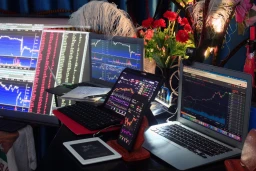What is Stock order in share market?

Investing in stocks and shares has become a popular way for people to make money over the years. If you’re new to the stock market, you may have heard of terms like ‘stock order’ and wondered what it means. Simply put, a stock order is an instruction from an investor to a broker or financial advisor to buy or sell shares of a particular stock. This can be done either online or through a broker’s office. In this article, we will explore what is stock order in share market and how it works.
Stock Order – Definition
A Stock Order is the trader’s instruction to buy or sell stock from their trading platform. While placing your order, you may notice a wide range of orders on your trading screen.
Types of stock market orders
Market order
A market order purchases or sells shares at the current market price.
The trader or investor has no control over the price in this case. But there is a very good chance that the trade will be executed very soon.
- If you place a Buy order, the shares will be purchased at the trade book’s current maximum asking price.
- If you place a Sell order, the shares will be sold at the trade book’s current minimum bidding price.
Limit Order
A limit order allows a trader to purchase or sell a share at a predetermined price.
These orders are primarily useful for traders who are not actively tracking price movement and have a predetermined share price in mind. The trade’s execution is uncertain; it will take place when the shares reach the predetermined price.
Stop loss order
A stop loss is a type of trade that allows traders to limit their losses by exiting the trade if the share reaches the trigger price.
By using a stop loss, you can protect yourself from large losses if the price of a stock suddenly rises or falls.
Types of stop loss orders
- Stop Loss Market order – A stop loss market order is similar to a stop loss order in that the trader sets a trigger price to exit the trade at the best available price. As soon as the trigger price is about to be reached, a market order is generated and executed at the market price. For example assume there is a sell position at Rs.100 and the trigger price for the stop loss is set at Rs.95. If the stop loss is triggered, the shares will be purchased at the best available market price.
- Limit Stop Loss Order – This is a type of trade in which the order sent to the exchange after the trigger is hit is a stop-loss limit order, i.e. the trade price must be previously defined by the user. For Example assume there is a sell position at Rs.100 and the trigger price for the stop loss is set at Rs.95. If the stop loss is triggered, the order is sent to the exchange and the trade is executed later at the set price of Rs.95.
After Market order (AMO)
AMOs are trades that are executed after the market has closed. It is critical for traders who do not have enough time to actively participate in the stock market but do not want to miss out on the opportunity to create wealth.
It should be noted that AMO can also be placed at Market Price.
For example, if you want to buy 500 shares of XYZ Ltd. at 7 am. You can simply place a trade through your trading app. The trade will be executed during market hours if the share reaches the predetermined price.

Immediate or Cancel order (IOC)
When you place an IOC trade. It will be cancelled if it is not executed immediately after it is placed on the exchange.
An IOC trade is extremely useful for traders who frequently place trades and are unable to closely monitor each trade.
For example, if you buy an IOC trade of ABC Ltd. for Rs.1000 at Rs.100. If 700 shares are available at Rs.100 when the trade is entered. The trade is executed and 300 shares are cancelled.
Cover order (CO)
A cover order is one of the types of orders that allows you to enter a position while also setting a stop loss in the same trade.
You can choose between two types of stop-losses: limit and market stop loss.
Bracket Order (BO)
A bracket order is a type of trade in which three orders are combined into one. You can enter your trade here with a target price and a stop loss. Please keep in mind that all Bracket trades are Limit orders. If you want to buy a share at Rs.100 with target price of Rs.110 and stop loss of Rs.95. You can do so with a bracket order.
CNC
CNC stands for Cash and Carry, where you can only buy and sell shares delivered to you.
It should be noted that the cash and carry method can be used at both the Limit Price and the Market Price.
If you want to buy shares and then sell them later, you should use the CNC order type.
MIS
Margin Intraday Square off is the full form of MIS. Because MIS is an intraday product, it must be squared off on the same trading day.
Follow us on Instagram.









